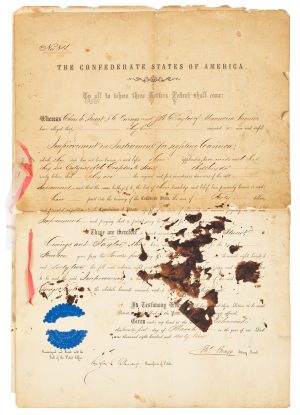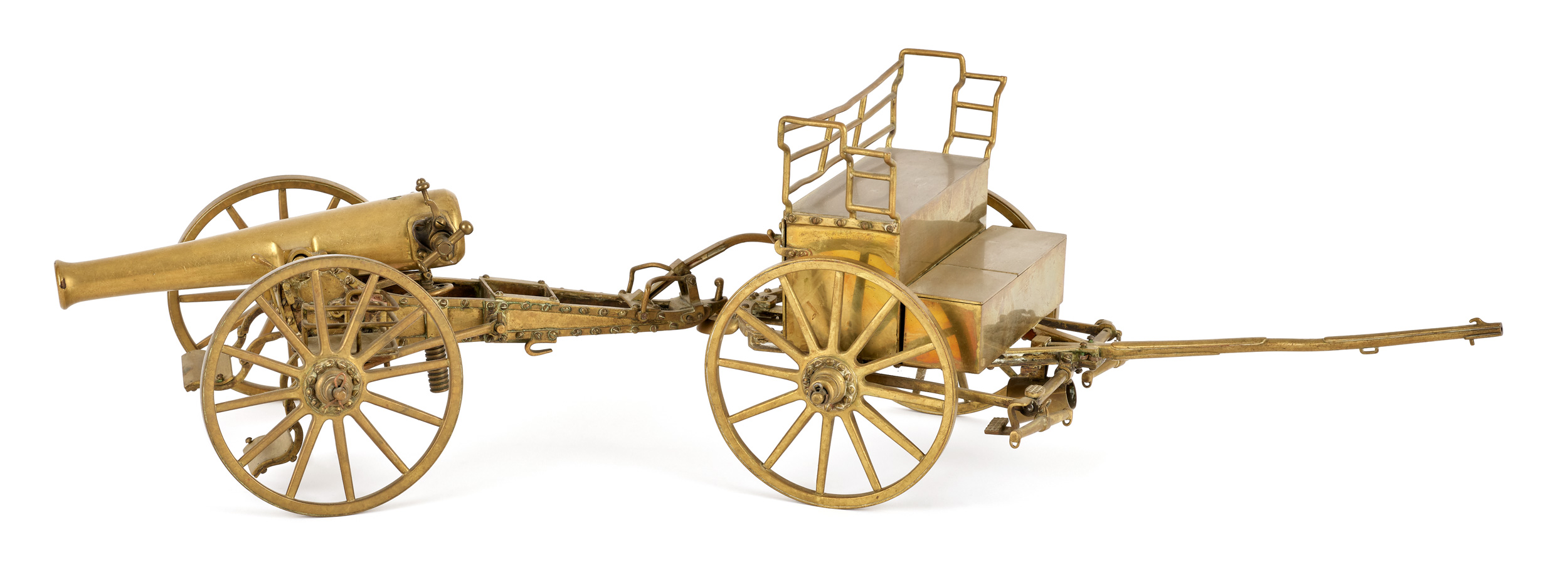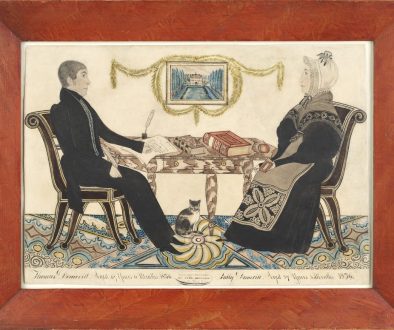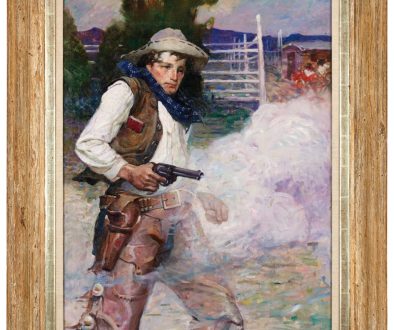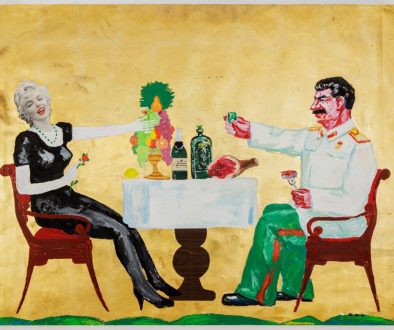Remedy for a Loose Cannon
The American Civil War is considered the first modern war, witnessing rapid advancement in military technique and technology. Lacking the North’s depth of military resources, it was crucial for the Confederacy to innovate. At inception in 1861 the Confederacy established its own patent office to facilitate and reward innovation. Rufus Rhodes, a New Orleans attorney who had worked with the U.S. Patent Office, was appointed Commissioner. Rhodes would be the only serving Commissioner.
Research by H. Jackson Knight in Confederate Invention: The Story of the Confederate States Patent Office & It’s Inventors, LSU Press, 2011, reveals that during the first year of operation the Patent Office received 304 applications and issued 57 grants. Over its four-year existence, the Office awarded 274 patents, one-third of which were related to firearms and weaponry. Amongst the patents Rufus Rhodes granted were ones for iron-clad armored boats, submarines, torpedoes, and repeating guns.
Patent 84 was issued to Chas. E. Stuart, I.C. Owings, and Jos. H.C. Taylor of Alexandria, Virginia for “Improvements in Instruments for sighting cannon”, along with a receipt for $40, on the 21st day of March, 1862.
Attainment of a patent did not appear to result in payment, as The Journal of the House of Representatives reveals two years later, on May 5, 1864, “Mr Funsten presented the petition of Charles E. Stuart and other patentees for compensation for an invention now in use in the Ordinance Department of the Confederate States; which, on motion, was referred to a special committee of three, to be appointed by the Chair.”
The issue was placed on the Calendar, delayed, and then finally taken up the following year on March 14, 1865. The innovators seemed to be on the cusp of payment. Then, on April 9, 1865, came the surrender of General Lee. As they withdrew from Richmond, the Confederates burned government buildings and records, including the Patent Office. Everything within the Office was lost.
It is exceptionally rare to have an original patent model certificate. It is the only Confederate States patent model paperwork known to exist. It will be sold together with a late 19th c. detailed model of a brass cannon and caisson which exhibits several L.W. Broadwell patents, overall length 28”. Please join us at Pook & Pook on January 18th and 19th to view this piece of history, along with the many other wonderful antiques in the sale.
by: Cynthia Beech Lawrence

lot 221


